Artificial Intelligence (AI) is a fascinating field that aims to mimic human intelligence in machines. One of the fundamental tasks in AI is solving problems by searching through a vast space of possible solutions. Uninformed search algorithms, also known as blind search algorithms, play a crucial role in this process. In this blog, we will dive into the world of uninformed search algorithms, exploring their principles, types, advantages, and limitations.
Table of Contents
- Understanding Uninformed Search Algorithm in AI
- Types of Uninformed Search Algorithms
- Breadth-First Search (BFS)
- Uniform-Cost Search (UCS)
- Depth-Limited Search (DLS)
- Iterative Deepening Depth-First Search (IDDFS)
- When to Use Uninformed Search
- Advantages of Uninformed Search
- Limitations of Uninformed Search
- Conclusion
Understanding Uninformed Search Algorithm in AI
Uninformed search strategies in artificial intelligence are the workhorses of AI when it comes to navigating problem spaces with little or no prior knowledge. These AI algorithms embark on a journey through a search space, systematically examining potential solutions until they find a goal state. They operate without the luxury of heuristics or domain-specific information, relying solely on brute-force exploration.
Types of Uninformed Search Algorithms in AI
- Breadth-First Search (BFS)
Breadth-First Search explores the search space level by level, starting from the initial state. It expands all possible successors of the current state before moving to the next level. BFS guarantees finding the shortest path but can be memory-intensive.
DFS explores as deeply as possible along one branch of the search tree before backtracking. It’s memory-efficient but may not always find the shortest path and can get stuck in deep branches.
- Uniform-Cost Search (UCS)
Uniform-Cost Search expands nodes based on their path cost from the start node. It ensures the optimal solution but may explore nodes with high costs, potentially requiring significant computational resources.
- Depth-Limited Search (DLS)
Depth-Limited Search is similar to DFS but limits the depth of exploration to prevent infinite loops in infinite-depth state spaces.
- Iterative Deepening Depth-First Search (IDDFS)
IDDFS combines the memory efficiency of DFS with the completeness of BFS. It performs a series of DFS searches with increasing depth limits until a solution is found.
When to Use Uninformed Search
Uninformed search algorithms are most suitable when:
- The problem space is not well-understood, and domain-specific knowledge is unavailable.
- Memory constraints are not severe, as some uninformed algorithms can be memory-intensive.
- The primary goal is to find a solution path without concerning oneself with optimization or efficiency.
Advantages of Uninformed Search
Uninformed search algorithms, also known as blind search algorithms, offer several advantages in certain problem-solving scenarios:
- Simplicity: Uninformed search algorithms are conceptually straightforward and easy to implement. They don’t require complex heuristics or domain-specific knowledge, making them accessible to both beginners and experienced AI practitioners.
- Completeness: When applied correctly, uninformed search algorithms are guaranteed to find a solution if one exists in the search space. This completeness property ensures that the algorithm will not miss a valid solution and will terminate with an answer if there is one to be found.
- No Domain Knowledge Required: Uninformed search algorithms are particularly useful when dealing with problems for which little or no domain-specific knowledge is available. They can be applied to a wide range of problems without the need for specialized information or expertise.
- Widely Applicable: These algorithms are applicable to various problem domains, such as route planning, puzzle solving, and general pathfinding. Their versatility makes them suitable for solving diverse real-world problems.
- Baseline Performance: Uninformed search algorithms often serve as baseline methods for evaluating the performance of more sophisticated search techniques. Comparing the performance of advanced algorithms against uninformed search can provide insights into the effectiveness of domain-specific knowledge and heuristics.
- Educational Value: Uninformed search algorithms are commonly used in educational settings to introduce students to the fundamentals of AI and search algorithms. They serve as a stepping stone for understanding more complex AI techniques.
- Initial Exploration: In some cases, uninformed search algorithms can serve as an initial exploration step. They may help identify potential solution paths or narrow down the search space before applying more advanced search methods.
It’s important to note that while uninformed search algorithms have these advantages, they also have limitations, So, the choice of search algorithm depends on the specific problem and the available domain knowledge, with uninformed search being a valuable tool in the AI practitioner’s toolkit when appropriate.
Limitations of Uninformed Search
Uninformed search algorithms, also known as blind search algorithms, have several limitations that can impact their effectiveness in solving certain problems. Here are some of the key limitations:
- Inefficiency in Large Search Spaces: Uninformed search algorithms can be highly inefficient when dealing with problems that have large or complex search spaces. For example, in a problem with a vast number of possible states or actions, these algorithms may explore a significant portion of the search space before finding a solution, leading to extensive computation times and resource consumption.
- Lack of Optimality: Uninformed search algorithms do not take into account any domain-specific information or heuristics to guide the search. As a result, they may not always find the optimal solution. In cases where an optimal solution is critical, using uninformed search can lead to suboptimal or non-optimal results.
- Memory Usage: Some uninformed search algorithms, such as Breadth-First Search (BFS), can be memory-intensive, especially when dealing with deep search trees or graphs. Storing all generated nodes in memory can be impractical in memory-constrained environments.
- Exploration of Irrelevant Paths: Uninformed search algorithms explore all available paths equally, which can lead to the exploration of irrelevant or unpromising paths. This can further contribute to inefficiency in finding a solution.
- Difficulty in Handling Cycles: Uninformed search algorithms may get stuck in cycles or loops in the search space, especially when dealing with problems that have repetitive states or actions. This can result in the algorithm running indefinitely without finding a solution.
- Limited Usefulness in Complex Domains: In domains where domain-specific knowledge is available, uninformed search algorithms may not be the best choice. Informed search algorithms that use heuristics and domain-specific information can often outperform uninformed search by guiding the search more effectively.
- Non-Adaptive: Uninformed search algorithms do not adapt their search strategy based on the characteristics of the problem or the progress of the search. They follow a fixed, predefined approach, which may not be well-suited to all problem instances.
- Not Suitable for Some Types of Problems: Uninformed search algorithms are generally better suited for problems that can be represented as a state space or a tree. They may not be suitable for problems that involve continuous spaces, complex optimization, or other specialized structures.
In summary, while uninformed search algorithms have their place in AI problem-solving, it’s essential to recognize their limitations. The choice of a search algorithm should be made based on the specific characteristics of the problem, available resources, and the need for optimality or efficiency. In many cases, a combination of uninformed and informed search techniques may be used to strike a balance between completeness and efficiency.
Conclusion
Uninformed search algorithms are the building blocks of AI problem-solving. While they lack the sophistication of informed search methods, they provide a foundation for tackling problems when domain-specific knowledge is scarce. Understanding their principles and when to use them is essential for any AI practitioner. As AI continues to evolve, the interplay between uninformed and informed search algorithms will remain at the heart of intelligent decision-making and problem-solving in artificial intelligence.
The post Uninformed search strategies in artificial intelligence appeared first on .
Tags:
- Artificial intelligence
- ai algorithm
- alpha beta pruning in ai
- artificial intelligence algorithm
- decision tree in ai
- minimax algorithm in ai
- regression in ai
- search algorithm in ai
- search strategies in artificial intelligence
- simulated annealing in ai
- supervised learning algorithms
- uninformed search strategies in artificial intelligence

 .NET MAUI Development
.NET MAUI Development
 Xamarin Application Development
Xamarin Application Development
 React Native App Development
React Native App Development
 iOS Application Development
iOS Application Development
 Android Application Development
Android Application Development
 Android Wear App Development
Android Wear App Development
 Ionic Development
Ionic Development
 iBeacon Application Development
iBeacon Application Development
 Universal Windows Platform (UWP)
Universal Windows Platform (UWP)
 Kotlin Application Development
Kotlin Application Development
 Swift Application Development
Swift Application Development
 Flutter Application Development
Flutter Application Development
 PWA Application Development
PWA Application Development
 Offshore Software Development
Offshore Software Development
 Custom Application Development
Custom Application Development
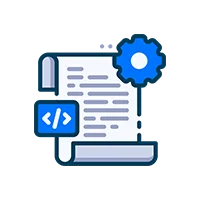 Front-End Development
Front-End Development
 Full Stack Development
Full Stack Development
 AI & Machine Learning
AI & Machine Learning
 Custom CRM Solutions
Custom CRM Solutions
 Flask Software Development
Flask Software Development
 Electron JS Development
Electron JS Development
 ChatGPT Development
ChatGPT Development
Telemedicine App Development
Build Smart Telemedicine Platform
Beauty & Salon App Solutions
Hire Workato Experts
Workato Consulting & Support
 .NET Application Development
.NET Application Development
 .NET Nuke Development
.NET Nuke Development
 Microsoft Dynamics CRM
Microsoft Dynamics CRM
 Microsoft Small Business Solution
Microsoft Small Business Solution
 VB .NET Development
VB .NET Development
 C# Development
C# Development
 Sharepoint Migration
Sharepoint Migration
 Sharepoint Development
Sharepoint Development
 ASP.NET Core Development
ASP.NET Core Development
 ASP.NET Development
ASP.NET Development
 ASP.NET MVC Development
ASP.NET MVC Development
 Kentico CMS
Kentico CMS
 Umbraco CMS
Umbraco CMS
 AJAX Development
AJAX Development
 Agile Development
Agile Development
 Microsoft Bot
Microsoft Bot
 Microsoft Blazor
Microsoft Blazor
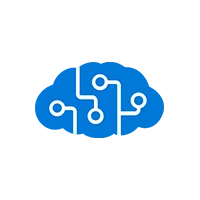 Microsoft Azure Cognitive
Microsoft Azure Cognitive

 Mean Stack Development
Mean Stack Development
 Vue JS Development
Vue JS Development
 Javascript Development
Javascript Development
 Angular JS Development
Angular JS Development
 Next JS development
Next JS development
 Java Development
Java Development
 Python Development
Python Development
 Django Development
Django Development
 Cherrypy Development
Cherrypy Development
 NodeJS Development
NodeJS Development
 Laravel Development
Laravel Development
 CodeIgniter Development
CodeIgniter Development
 Zend Development
Zend Development
 Ruby on Rails Development
Ruby on Rails Development
 CakePHP Development
CakePHP Development
 PHP Website Development
PHP Website Development
 Symfony Development
Symfony Development
 Drupal Development
Drupal Development
 Joomla Development
Joomla Development
 Wordpress Development
Wordpress Development
 Magento Development
Magento Development
 Magento 2.0 Development
Magento 2.0 Development
 Magento Enterprise
Magento Enterprise
 Shopping Cart Development
Shopping Cart Development
 Prestashop Development
Prestashop Development
 Shopify Development
Shopify Development
 Open Cart Development
Open Cart Development
 WooCommerce Development
WooCommerce Development
 BigCommerce Development
BigCommerce Development
 NopCommerce Development
NopCommerce Development
 Virto Commerce Development
Virto Commerce Development
 AspDotNetStorefront Development
AspDotNetStorefront Development
 RaspBerry Pi
RaspBerry Pi
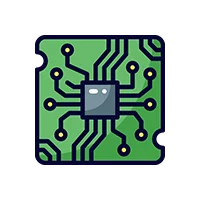 Firmware Software Development
Firmware Software Development
 ESP 32 Software Development
ESP 32 Software Development
 Embedded Development
Embedded Development
 Internet of Things
Internet of Things
 Nordic Development
Nordic Development
 HTML 5
HTML 5
 UI/UX Design
UI/UX Design
 Graphic Design
Graphic Design
 Adobe Photoshop
Adobe Photoshop
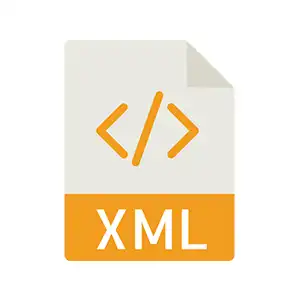 XML Application Development
XML Application Development
 Cloud Computing Solutions
Cloud Computing Solutions
 Azure Cloud App Development
Azure Cloud App Development
 AWS Development
AWS Development
 Google Cloud Development
Google Cloud Development
 SQL Programming Development
SQL Programming Development
 MySQL Development
MySQL Development
 MongoDB Development
MongoDB Development
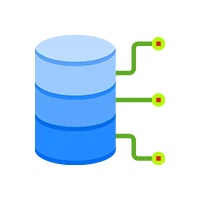 Big Data
Big Data
 Robotic Process Automation
Robotic Process Automation
 Social Media Marketing
Social Media Marketing
 Search Engine Optimization
Search Engine Optimization
 QA Testing
QA Testing
 Software Testing
Software Testing
 Software Security
Software Security
 Maintenance And Support
Maintenance And Support
 I.T. Consulting Services
I.T. Consulting Services
 Business Intelligence
Business Intelligence
 YII Development
YII Development
 Data Analysis
Data Analysis
 Alexa Skills Development
Alexa Skills Development
 On Demand App for Mobile repairing services
On Demand App for Mobile repairing services
 On Demand App for Car Service Booking
On Demand App for Car Service Booking
 On Demand App for Cleaning Services
On Demand App for Cleaning Services
 On Demand App for Pharmacy
On Demand App for Pharmacy
 On Demand Dedicated Developers
On Demand Dedicated Developers
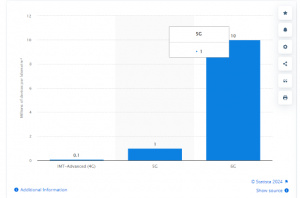

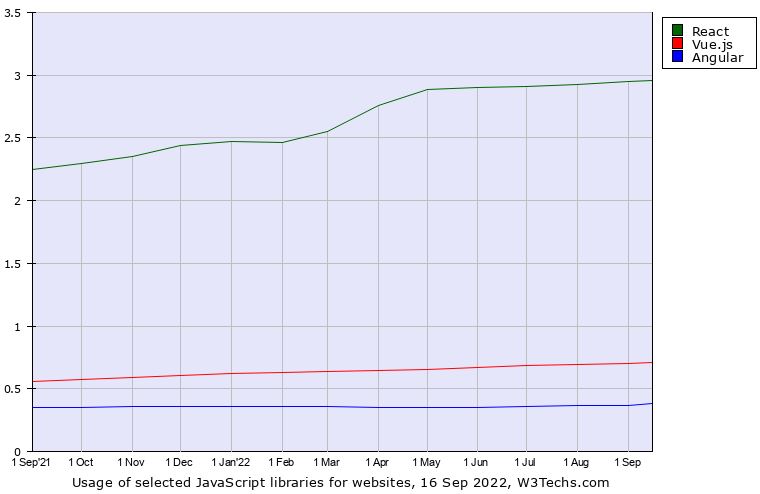





Leave a Reply